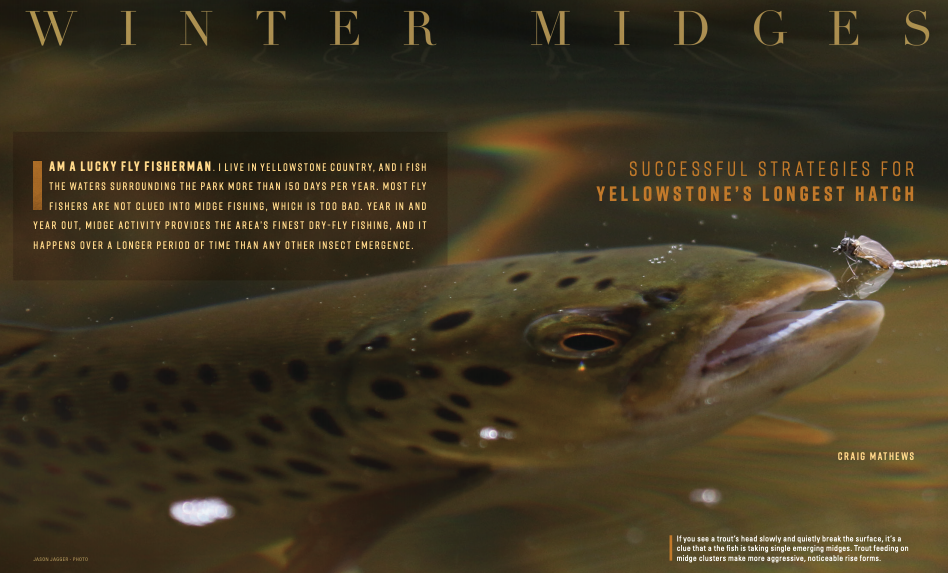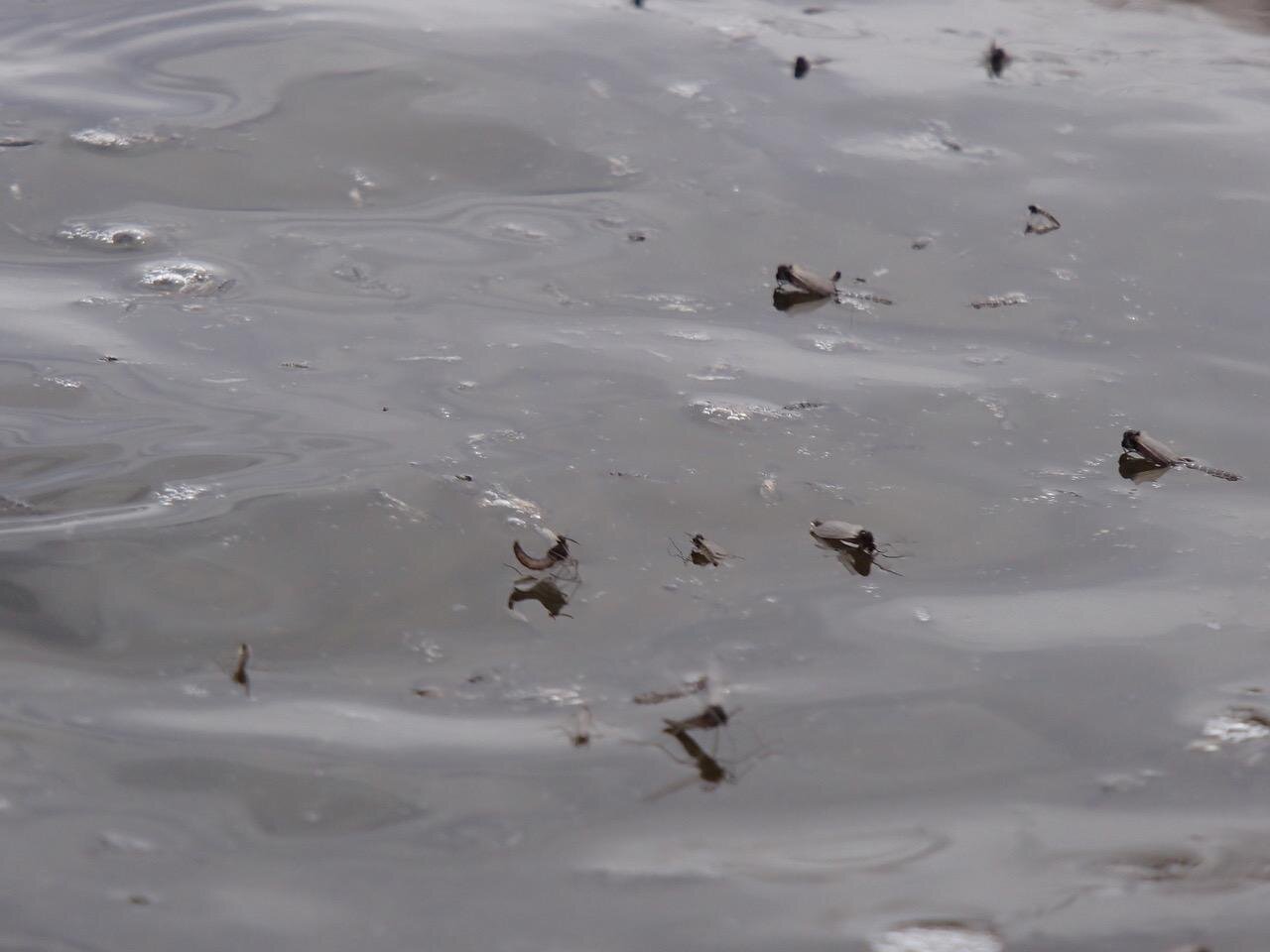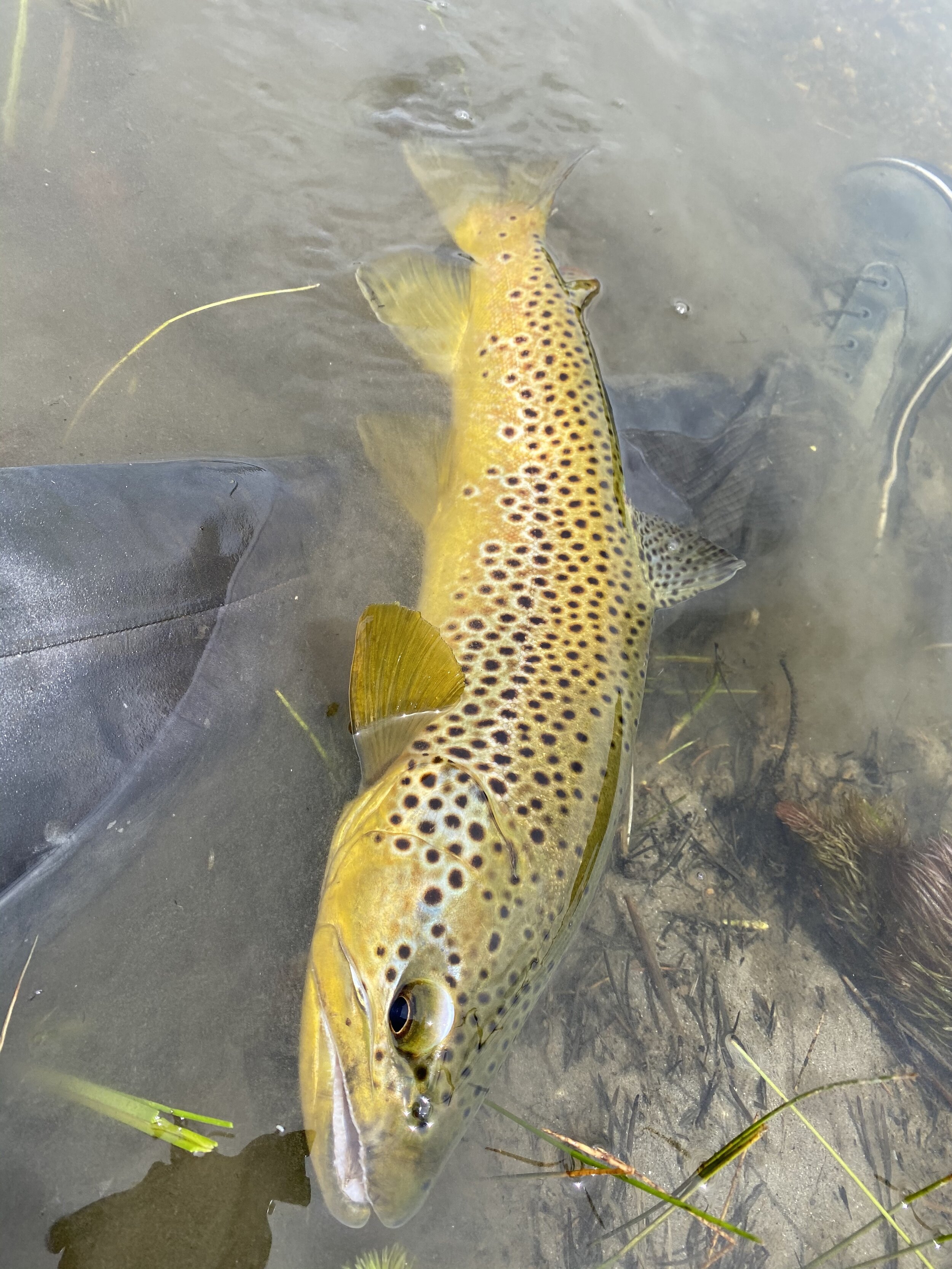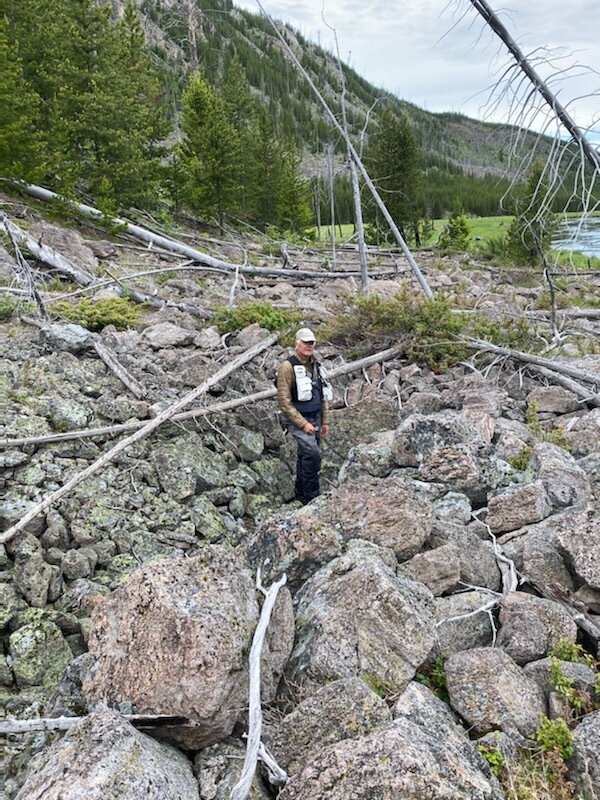I am a luck fly fisherman. I live in Yellowstone Country, and I fish the waters surrounding the Park more the 150 days per year. Most fly fishers are not clued into midge fishing, which is too bad. Year in and year out, midge activity provides the area’s finest dry-fly fishing, and it happens over a longer period of time than any other insect emergence.
Perfect winter midge weather on the Madison River.
The short introduction above is part of an article I’ve written for the April-May 2021 issue of Fly Fisherman Magazine. This article discusses successful strategies for Yellowstone’s longest hatch, winter midges.
Please continue reading my article by subscribing to Fly Fisherman online (subscription link at top of page) or pick one up at your nearest fly fish shop, sporting good store, or grocery store around the country. Or if you prefer, you can download the Fly Fisherman app on your smart phone and subscribe there to receive Fly Fisherman news digitally.
Below are a few photos of fishing Yellowstone’s longest hatch. As always, thank you for your continued interest in Yellowstone Country and Fly Fishing with Craig Mathews. Hope to see you in Yellowstone country!
Sneaking on trout rising to midges.
Madison rainbow trout on Zelon Midge.
Winter midge pupae shucks.
Note shucks on emerging midges.
Spring creek rainbow taking midge pupa in drift.






















